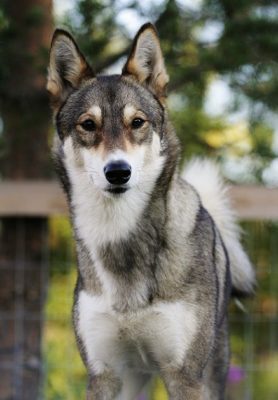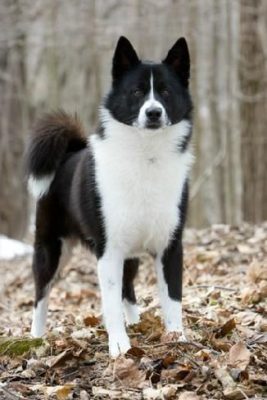East Siberian Laika
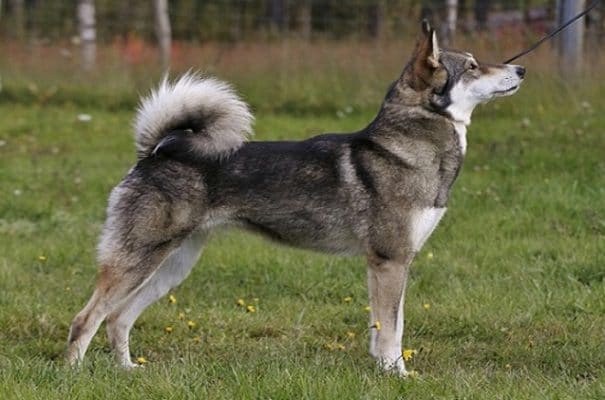
The East Siberian Laika was initially bred as a hunting dog for small and large game, but over time has evolved into a versatile dog. It is a stubborn and independent dog, but it is usually a good family companion. The East Siberian Laika is a territorial dog and usually does not get along well with other dogs, especially dogs of the same sex. Early socialization is important, but even so, other dogs need to be watched constantly.
Table of Contents
Breed Information
| Another Name | Vostotchno-Sibirskaia Laika |
| Origin | Russia |
| Height | Males 55-66 cm Females 51-60 cm |
| Weight | 18-23 kg |
| Fur | Medium length |
| Color | Black, white, yellow-brown, gray, brown |
| Lifespan | 12-15 years |
| FCI Classification | Spitz and primitive types |
| Group | Hunting dogs, guard dogs |
| Price | $100-400 |
Breed Photos
Origin History
The East Siberian Laika is one of four different huskies in Russia: the Karelian-Finnish husky, the Russian-European husky, the East Siberian Laika, and the West Siberian Laika. East Siberian Laika retains many features of the wolf, its close ancestor. The exact date of the Laika’s appearance is unknown, but it is known that the East Siberian Laika was isolated as a separate breed in 1947.
The breed lost much of its popularity when hunters began using dogs bred for specific purposes, such as hound dogs. There was a time when the East Siberian Laika was on the verge of extinction. There were only a few scattered around the north in small villages. These few dogs were rounded up, and the East Siberian Laika was separated from the other husky breeds.
Between 1930 and 1950, a controlled breeding program was implemented to restore the husky breeds and develop a written standard for each breed. A state-controlled kennel was established in the 1960s for the East Siberian Laika. By 1970, only 39 purebred East Siberian Laikas were registered. The breed standard was revised and changed in the 1970s. Since then, the breed has increased in numbers but is still considered rare.
Appearance
The East Siberian Laika is a dog with a dense, double coat of medium length. Its topcoat is very hard to the touch, without curls or waves. The undercoat is woolly and soft to the touch. The most popular colors of the East Siberian Laika are black and tan, solid black, black and white, or predominantly white.
This breed has a typical spitz tail curling backward. The East Siberian Laika has a black nose unless it is a lighter color, such as white or brown. The eyes are oval-shaped, medium-sized, and they should not be round or too big. The color of the eyes is dark brown. The ears are medium-sized, triangular, and stand upright.
Character
The East Siberian Laika was initially bred as a hunting dog for small and large game, but over time has evolved into a versatile dog. It is a stubborn and independent dog, but it is usually a good family companion. The East Siberian Laika is a territorial dog and usually does not get along well with other dogs, especially dogs of the same sex. Early socialization is important, but even so, other dogs need to be watched constantly. The East Siberian Laika has a very high hunting instinct and does not do well in a household with other pets. With proper training, the husky will be a well-adjusted family member and will act as a protector for all family members. The East Siberian Laika is an excellent guard dog; however, the husky can become aggressive toward strangers.
Care
The East Siberian Laika molts frequently. Expect to brush your East Siberian Laika at least once a week, except during seasonal shedding, when the pet needs to be brushed daily. When grooming your East Siberian husky, use a pin-brush or smooth brush. Bathe her only a few times a year, preferably when there is a seasonal molt. When bathing, use a mild shampoo and rinse your pet thoroughly. Trim his toenails as needed. Brush your dog’s ears weekly and check for redness or foul odor, which may indicate an infection.
Training
The East Siberian Laika is a very energetic dog and needs many daily exercises to stay happy. Long walks or hikes are a great way to keep your dog happy and obedient. Parks are not recommended for this breed of dog because of their intense dislike of most other dogs.
Common Diseases
As an ancient breed, the East Siberian Laika is a fairly healthy and hardy breed. However, like all dogs, they are prone to specific health problems as well as hunting-related injuries. Some of the conditions known to affect the breed include umbilical hernia, hip dysplasia, elbow dysplasia, etc.
Nutrition
East Siberian Laikas are undemanding pets that don’t need a variety of foods. Along with meat, they can be given cheaper products such as sea fish, cereals, by-products, rye bread, sour milk, chicken eggs, vegetables (except legumes), fruits, and young greens. Some owners teach their pets to find edible fruit and eat it off the bush. Later on, if the dog gets lost on the hunt, he can feed himself for a few days.
Obligatory products in the diet of East Siberian Laika puppies are cottage cheese and cartilage tissue, without which the formation of a strong skeleton is impossible. The first supplementary food in the life of an oriental is liquid porridge with milk (semolina, pureed herringbone). It is better to give them to one-month-old puppies. As an encouraging treat, unsalted cheese, butter, rye crackers will do. Sources of essential vitamins can be dandelion leaves, nettles (scalded with boiling water), kelp, or ready-made vitamin complexes from the drugstore.
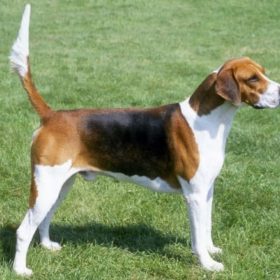 English Foxhound
English Foxhound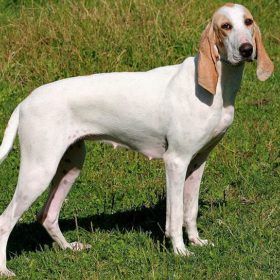 Porcelaine
Porcelaine Chortai
Chortai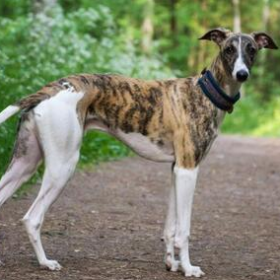 Greyhound
Greyhound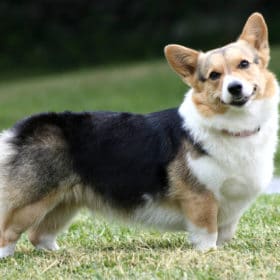 Cardigan Welsh Corgi
Cardigan Welsh Corgi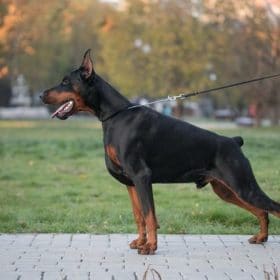 German Pinscher
German Pinscher